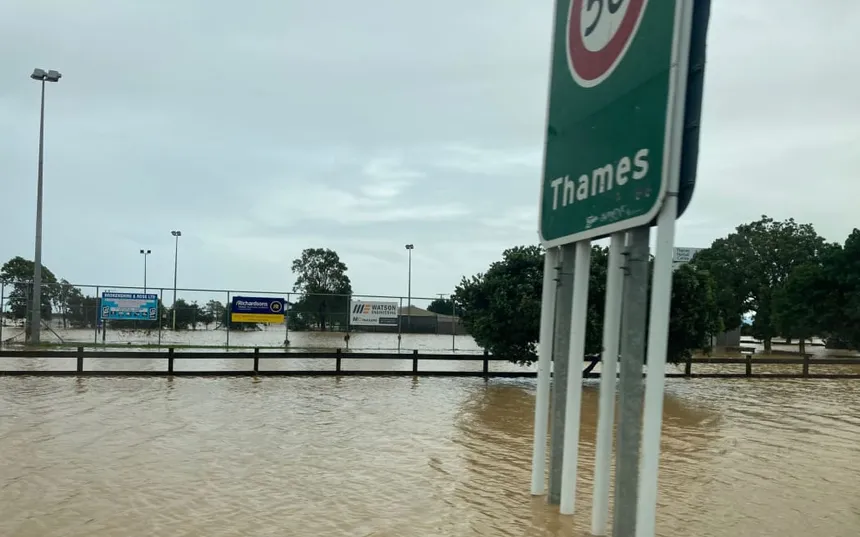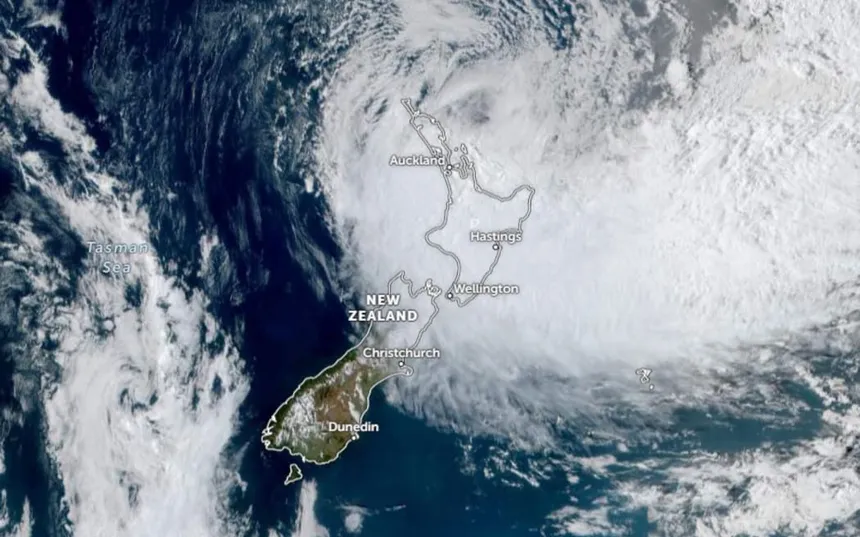As Cyclone Gabrielle finally begins to move away from New Zealand, the country is grappling with the devastating aftermath of the severe storms that have left numerous communities in ruins. The storm’s trail of destruction has resulted in at least four deaths, including a child, and over 10,000 people displaced. The authorities have received more than 1,440 reports of missing people, with concerns growing for several individuals, particularly those who are difficult to reach due to limited communications and power outages.
In Hawke’s Bay, a child’s body was found in Eskdale, believed to have been caught in rising water during the storm. Prime Minister Chris Hipkins acknowledged the mounting grief of those who have lost loved ones, stating that the tragedy would be unimaginable for their families.
The search and rescue efforts are ongoing, with Wellington hit by an earthquake on Wednesday evening, measuring 6.2 on the Richter scale. Thankfully, there were no reports of damage or casualties. However, some areas of the North Island remain cut off from access, power, and communications, making it challenging to assess the damage and reach those in need.
Roads and homes have been submerged by flooding, while key state highways have been blocked by landslides and road collapse. Power was restored to around 80,000 households overnight, but it is estimated that 160,000 remain without electricity. According to police, at least three people have died in the Hawke’s Bay area, including a woman who was killed after a landslide crushed her home and another found dead on the shoreline.
Rescue missions are under way in the region, where hundreds of people have been rescued from rooftops after floodwaters rose to inundate their homes. In some cases, the waters were up to the second story of homes where people were being rescued. The defence force has stated that it would not be surprising if the death toll in the region rises further.

The government is bracing for a huge influx of people needing emergency or ongoing accommodation, with an estimated 10,500 displaced and the number expected to rise. The number of people injured and homes destroyed remains unknown. The housing minister, Megan Woods, acknowledged that this would be the largest emergency housing project the country has ever undertaken, surpassing even the Christchurch earthquake.
Concern is growing for areas of the North Island where communications or power remains limited, making it difficult for authorities to access information on the welfare of small settlements and rural residents. In the town of Wairoa, home to around 8,600, a civil defence team dispatched a message via satellite phone early on Wednesday, stating that they were managing but facing severe challenges, including food, water, fuel, and communications.
The damage to New Zealand’s transport network is extensive, with many key arterial routes cut off by slips or collapse. In the Coromandel, access is extremely limited, with the region “absolutely pelted”. The state highway has collapsed, and the road network has been decimated by slips.
In Northland, the northernmost region, access is also extremely limited, with landslides cutting off most of the state highways. The government continues to urge New Zealanders to evacuate if necessary and avoid unnecessary travel, stressing that it will take time for the country to recover from the devastation.

